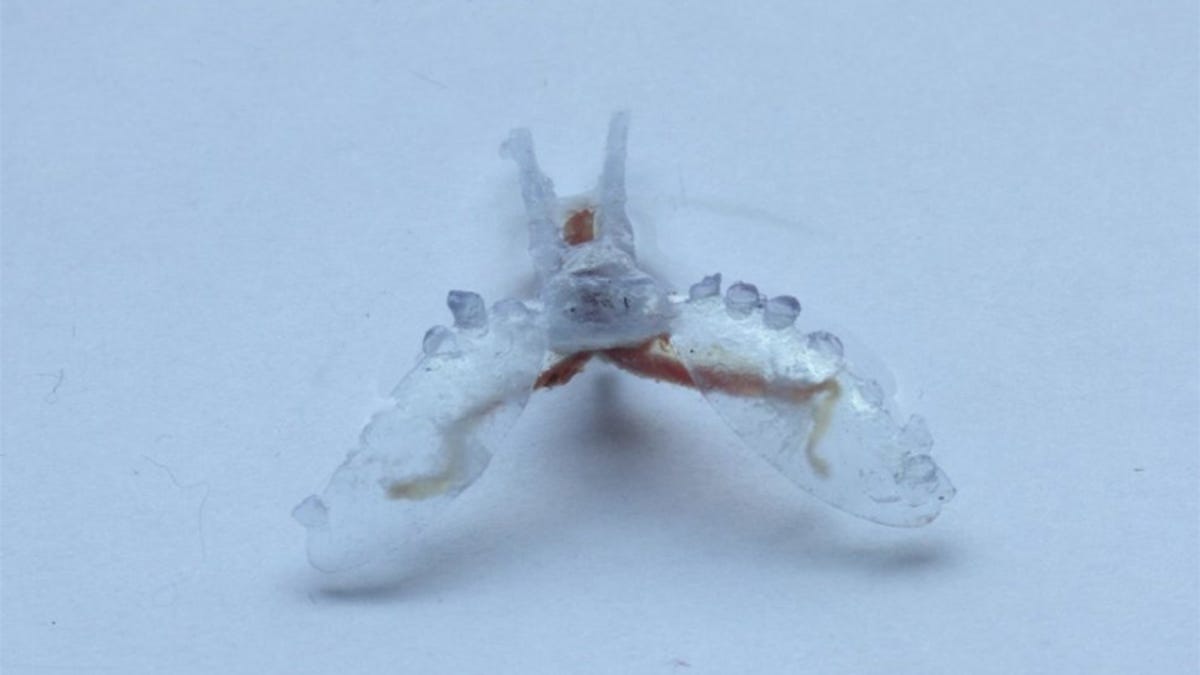'Cyborg' robot built out of sea slug muscle and 3D printing
A team taps muscle and collagen from the sea slug to create a robot that could be used in environmental surveillance and search missions in places such as the ocean.
Watch out for our new roboslug overlords. Researchers at Case Western Reserve University have created a robot made from the muscle of a sea slug in a flexible 3D-printed polymer body. It's just under 5 centimeters (2 inches) long, but the little robot has big implications.
"We're building a living machine -- a biohybrid robot that's not completely organic -- yet," lead researcher and Ph.D. student Victoria Webster said in a statement.
The team wanted a robot that's pliant, as opposed to the rigidity of actuators. This is where muscle is superior. It also carries its own fuel source, and has a much higher power-to-weight ratio. And the sea slug is adaptable. It can handle changes in temperature, salinity and other environmental variables like depth pressure.
After experimenting with using cells, the team built the robot using the entire buccal mass, or I2 muscle, from the mouth of the California sea slug and a soft polymer body. When an external electric field is applied, the muscle expands and contracts, moving the robot's arms.
It's early days. Currently the robot can only move 4 millimeters per minute (0.15 inches). But the team already has plans to build a more sophisticated version using ganglia, the nerve and neuron bundles that conduct signals from the brain to the muscles.
"With the ganglia, the muscle is capable of much more complex movement, compared to using a manmade control, and it's capable of learning," Webster said.
At the lab of Ozan Akkus, professor of mechanical and aerospace engineering and director of the CWRU Tissue Fabrication and Mechanobiology Lab, the team also used collagen from the slug's skin to create a scaffold that could be used in place of the polymer body for a fully organic robot.
"When we integrate the muscle with its natural biological structure, it's hundreds to thousands times better," Akkus explained.
In the future, robots such as these could be used in environmental surveillance, and search missions in places such as the ocean. Because they're organic, they could be inexpensive to produce, and would not provide additional pollutants to the environment if they couldn't be recovered.


